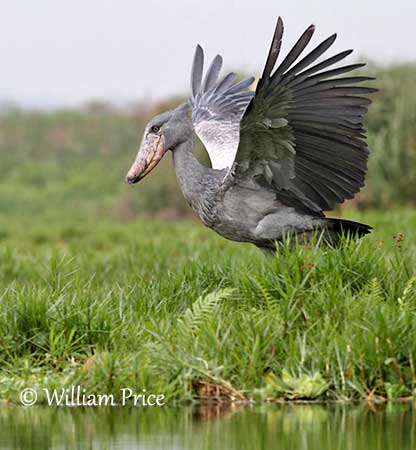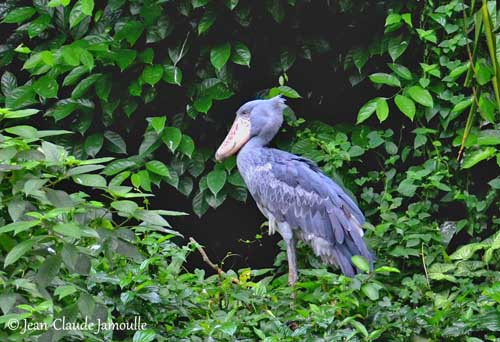
Shoebill
Balaeniceps rex
Pelecaniformes Order - Balaenicipitidae Family
BIOMETRICS:
Length: 120cm; Wingspan: 230cm ; Weight: 4-7 kg
LONGEVITY : 36 ans
DESCRIPTION:
Shoebill derives its name from its massive shoe-shaped bill. It is also named “whale-headed Stork”. It is a unique bird of uncertain affinities with its prehistoric looking. With its primitive appearance, Shoebill shows similarities to storks, pelicans, hamerkops and herons. There is much debate about Shoebill’s closest relatives.

DIET:
Shoebill is a carnivore species, but it feeds mainly on fish, and particularly Lungfish (Protopterus dolloi), and other fish swimming near surface. It also eats turtles, water snakes, lizards, frogs, young crocodiles, young water birds, snails and rodents.
It feeds on various ways. It often stands in water, waiting for prey passing by. It is almost motionless, with bill pointed downwards. It may sometimes stand on floating vegetation, watching for prey. Its long toes spread its weight, but gradually, Shoebill sinks into water. It can also walk slowly along water, searching for food.
PROTECTION / THREATS / STATUS:
Shoebill is threatened by habitat loss in certain parts of its range. Drainage of wetlands for human developments, nesting areas burned to make easier fishing and hunting accesses for people, birds caught and sold to zoos, or killed for food, are important threats for this species which is listed as Near Endangered, that means it will become endangered in near future.
Fr: Bec en sabot du Nil
All : Schuhschnabel
Esp : Picozapato
Ital : Becco a scarpa
Nd : Schoenbekooievaar
Russe : Китоглав
Sd : träskonäbb
Photographers:
Many thanks to Jean Michel Fenerole for this superb observation of the chick at nest
Photos d’Oiseaux du monde
Jean-Claude Jamoulle
A la rencontre des Oiseaux
David Nowell
GALLERY
William Price
PBase-tereksandpiper & Flickr William Price
Text by Nicole Bouglouan
Sources:
HANDBOOK OF THE BIRDS OF THE WORLD vol 1 by Josep del Hoyo-Andrew Elliot-Jordi Sargatal - Lynx Edicions - ISBN: 8487334105
L’ENCYCLOPEDIE MONDIALE DES OISEAUX - Dr Christopher M. Perrins - BORDAS - ISBN: 2040185607
Wikipedia (Wikipedia, The Free Encyclopedia)
CREAGUS@Monterey Bay (Don Roberson)
Animal Diversity Web (University of Michigan Museum of Zoology)
BirdLife International (BirdLife International)
VOICE:
Shoebill snaps its bill, as storks, during courtship and threat displays. Sound is strong and hollow, very characteristic “dok”.
Adults are usually silent, but they can utter whining sounds, or mooing-like noises. Chicks begging food utter hiccup-like sounds.
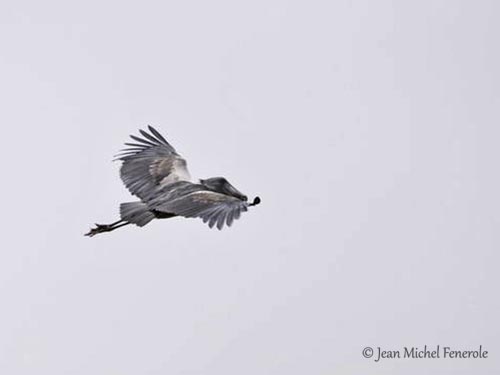
Shoebill is usually solitary. Adults are seen together only for breeding, but groups may gather if food resources are abundant. Shoebills occupy large territories of several square km, and pair defends a wide territory around the nest-site. Often, mates forage on opposite sides of their territory.
Shoebills are noisy during courtship displays. Both birds bow to each other while they clatter their bills, squeal or whine.
Shoebill is not migratory is food resources are available. However, in some areas, they can perform seasonal movements between nest-sites and foraging areas.
FLIGHT:
Shoebill has powerful wings. It may be seen soaring on thermals at great heights as pelicans and storks. It flies with retracted neck as herons.
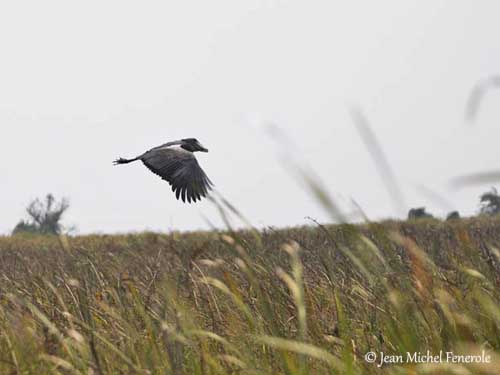
Young are protected at nest by one adult staying with them during the first 35 days after hatching. Young birds cannot stand at this moment. Then, both parents leave the nest for hunting. Young leave the nest at about 95 to 105 days of age, but they return at nest for one week more. After that, they can fly 10 days later. Parents feed them for about one month after fledging. Usually, only one chick remains, due to predation of food availability.
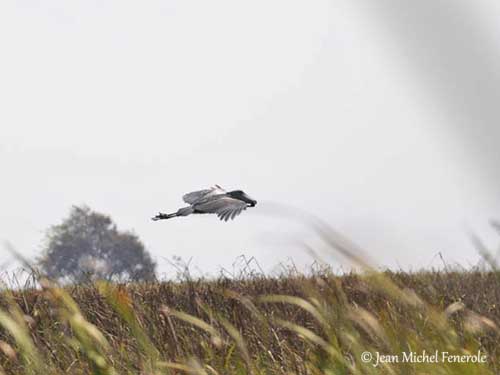
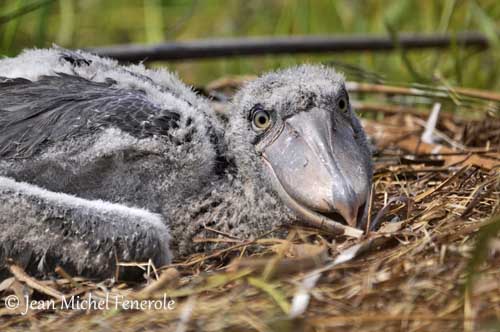
This nest is managed and protected by the Shoebill Island Camp’s team in Bangweulu – Zambia, and it is rarely visited by birders.
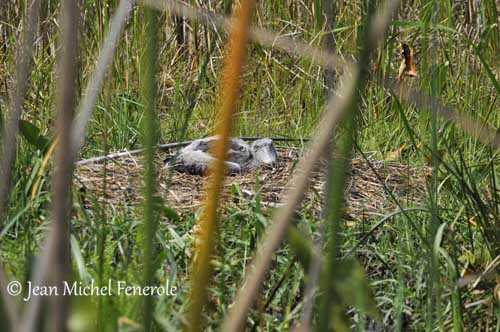
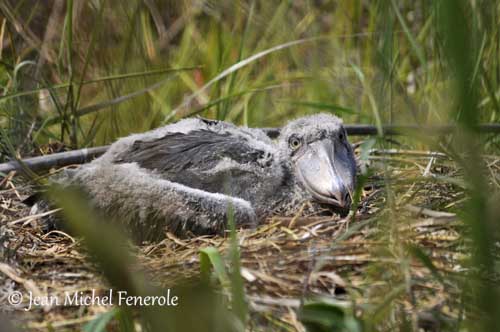
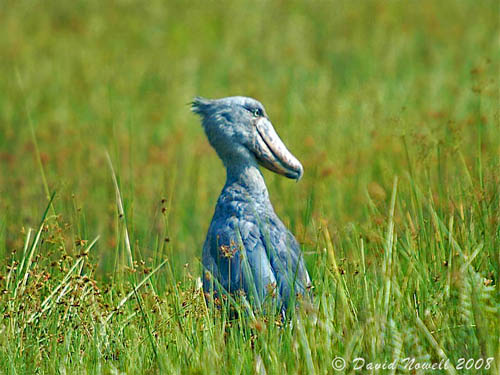
HABITAT:
Shoebill is endemic to Africa. It is found in large reed swamps and extensive papyrus grass. We can also find it in flooded marshes with floating vegetation, but it prefers papyrus.
RANGE:
Shoebill lives and breeds in tropical east Africa, from Sudan and western Ethiopia to Zambia.
BEHAVIOUR:
Shoebill usually feeds at night in shallow water. It remains motionless, as herons, waiting for preys. Then, when prey is located and selected, it attacks with good speed and power. The prey is grasped from the water with hooked bill which grips, crushes and pierces very quickly. Its preferred prey is the African Lungfish, and other fishes, amphibians and reptiles.
Shoebill often holds its bill pointed downwards in order to benefit by its binocular sight, making easier capturing preys. Then, it quickly snaps up the prey with the bill. After swallowing food, Shoebill drinks some water.
